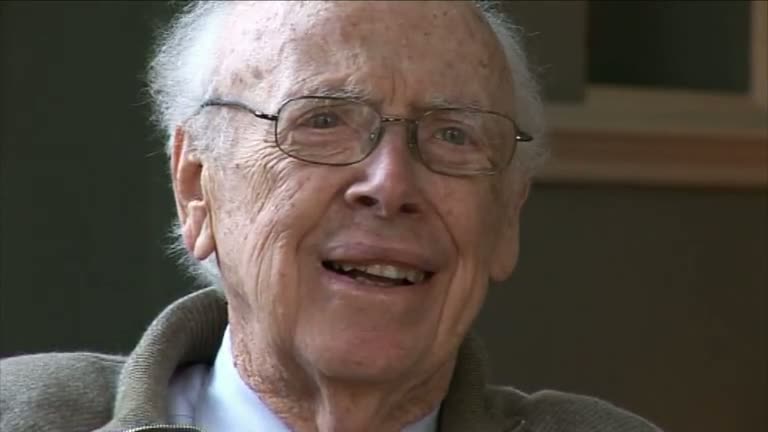NEXT STORY

Telling people about our discovery
RELATED STORIES

NEXT STORY

Telling people about our discovery
RELATED STORIES


|
Views | Duration | |
|---|---|---|---|
| 21. My first meeting with Francis Crick | 275 | 07:33 | |
| 22. My first year in Cambridge | 140 | 06:12 | |
| 23. Life in Cambridge | 132 | 08:31 | |
| 24. My lack of manners | 269 | 01:15 | |
| 25. Seeing Rosalind Franklin's photo of DNA | 783 | 07:17 | |
| 26. On being competitive | 177 | 05:27 | |
| 27. Competition and microbiology | 110 | 04:03 | |
| 28. Consequences and fear | 118 | 04:11 | |
| 29. Complementarity and my place in history | 115 | 07:19 | |
| 30. Realizing we had determined the structure of DNA | 302 | 03:06 |


Well, I'd been spending about a week doodling with base pairs on paper, and was trying to make a structure where it was like... attracts like, A attracts A. And then worried about the problem that the purines and pyrimidines aren't the same size. But, you know, it was an attraction scheme where like for like by still going along with chemistry. And I showed that to Jerry Donahue who was a chemist trained at Caltech. He'd been with Pauling, came for a year's sabbatical at Cambridge. And he was a quantum chemist, and he looked at my base pairs and said I had the hydrogen atoms wrong for thymine and guanine, that the structure, for reasons I forget, but it had something to do with iketopepperosine, that their structure was more like it would be keto than enol. And, so I didn't know the chemistry... didn't know whether he was right or wrong, but about 24 hours after being told that I was wasting my time I changed the location of the hydrogen atoms on the paper, cardboard base pairs that I'd made, and did that on the last day of February of 1953, it was a Saturday morning. And had put together the right base pairs by 10 or 10.30 when Francis, it was his customary hour to come in to the office.
And so he saw them, and they were the same size. And then he immediately realized if you flip flop them over they could... any base could be on either chain, and you could... the chains going, and the structure meant the chains went in opposite directions, which the space group had predicted. So all... that all probably occurred within 10 minutes. That was it. That... he really knew the... the strength of the space group argument which said you had two chains running in opposite directions. And they had to run in opposite directions if you used the base pairs. So, whether it was 10 minutes or a half hour, it certainly wasn't two hours, because, you know, we were at lunch at the ordinary time. So we were...
[Q] That was the moment.
That was the moment.
American molecular biologist James Dewey Watson was best known for discovering the structure of DNA for which he was jointly awarded the 1962 Nobel Prize in Physiology or Medicine along with Francis Crick and Maurice Wilkins. His long career saw him teaching at Harvard and Caltech, and taking over the directorship of Cold Spring Harbor Laboratory in New York. From 1988 to 1992, James Watson was head of the Human Genome Project at the National Institutes of Health.
Title: Realizing we had determined the structure of DNA
Listeners: Martin Raff Walter Gratzer
Martin Raff is a Canadian-born neurologist and research biologist who has made important contributions to immunology and cell development. He has a special interest in apoptosis, the phenomenon of cell death.
Walter Gratzer is Emeritus Professor of Biophysical Chemistry at King's College London, and was for most of his research career a member of the scientific staff of the Medical Research Council. He is the author of several books on popular science. He was a Postdoctoral Fellow at Harvard and has known Jim Watson since that time
Tags: 1953, Jerry Donahue, Francis Crick
Duration: 3 minutes, 6 seconds
Date story recorded: November 2008 and October 2009
Date story went live: 18 June 2010